Our dogs have layered needs, ranging from food, water, and other basic necessities for any living creature, to more complex requirements, such as physical exercise, mental stimulation, and the ability to engage in natural, instinctual behavior.
The practice of satisfying these complex needs — especially the ones involving your dog’s mental and emotional well-being — is often termed canine enrichment.
Essentially, canine enrichment means providing your pooch with ways to exercise his natural instincts in safe, appropriate, and fun ways. Put another way, you’ll be giving your pupper the opportunity to do things that will enrich his life.
By providing your pet with different types of enrichment, you’ll not only help your pupper live his best life, you’ll also find that it improves your life too.
We’ll talk more about that later, but we’ll get started by jumping in with both feet and simply explaining the basics of enrichment and providing you with some good examples.
Canine Enrichment 101: Key Takeaways
- The term “canine enrichment” refers to the practice of providing your dog with objects and opportunities that improve his overall quality of life. Most of these things address your dog’s mental and emotional well-being as he engages in natural, instinctual activities, but some also serve as a form of physical exercise.
- By keeping your mutt’s mind stimulated, you’ll likely notice a reduction in undesirable behaviors. Many of the problems our dogs cause can ultimately be traced to a common cause: boredom. By keeping your pup’s brain busy, he’ll be less likely to chew your shoes or dig up your flowerbed.
- There are a variety of ways to provide enrichment for your dog, so embrace the options that work for you and your pet. Some owners and dogs will have fun during long hikes through the forest, others will enjoy more elaborate training sessions, and some will find that perplexing pooch toys are the ticket.
What Is Canine Enrichment and Why Is It Important?
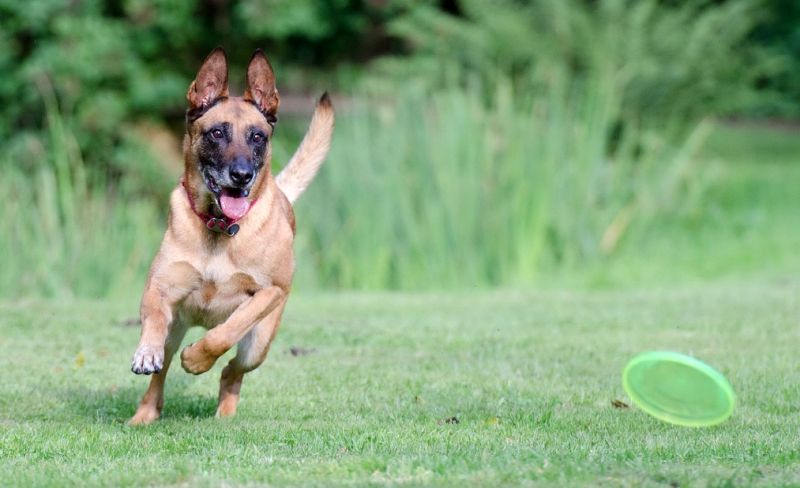
Canine enrichment includes any safe, dog-appropriate activity that gives your pet a richer, fuller life.
The best canine enrichment activities should provide an outlet for your pupper’s natural instincts. This will help keep his brain busy and nurture his physical health and mental well-being.
But it’s important to understand that canine enrichment is not optional, even though it sounds like it may be — at least, not for compassionate owners.
Wild canines may not enjoy all of the creature comforts their domestic counterparts do, but they live complex lives that are full of stimuli. They spend their lives sniffing, exploring, hunting, and solving problems.
Living in the wild may not make for a very cushy existence, but it’s certainly not a dull affair.
By contrast, our domestic doggos — whose basic needs are met by their humans — must often endure soul-crushing boredom on a daily basis. We bring them their food and water, tell them what to do and when to do it, and are essentially the gatekeepers for their life experiences.
So, it is incumbent upon us to provide them with plenty of stimulation to make sure that they live their best lives. Enrichment provides an effective way to do so.
Our Bodies (And Our Dogs) Are Designed for a Different Era
It may be difficult for us humans to grasp why it’s so important to give dogs the opportunity to shred and dig, especially when those behaviors tend to cause us nothing but grief.
However, the need to practice instinctual behaviors applies to humans too.
This is why, despite our modern, more sedentary lives, many studies show that engaging in movement-based activities like walking is good for our physical and mental wellbeing.
Our bodies evolved to spend long periods of time walking – it’s what humans were designed to do. While we may eventually adapt to our sedentary living, in the grand scheme of things our bodies are still built with our ancestors’ needs in mind.
The same holds for our dogs.
While they’ve earned the coveted space of beloved pets in our households, genetically they are still built to engage in natural behaviors and activities that were once essential for their survival in the wild. Not giving them the opportunity to practice these behaviors – regardless of how annoying we find them – can have a significant impact on their mental wellbeing.
Whoever said “a tired dog is a good dog” forgot to mention that mental stimulation is just as important as physical exercise.
Well-exercised dogs are undoubtedly better behaved than dogs who don’t get a chance to move about. But dogs who enjoy plenty of physical exercise and mental stimulation are well-behaved and happy!
Canine Enrichment Will Make YOUR Life Better Too
Let’s be clear: The number one reason to provide your four-footer with enrichment opportunities is to make his life better.
But that’s not the only benefit; enriching your pet’s life will often make your life better too.
Hear me out.
Dogs who lack sufficient stimulation often feel bored or frustrated — understandably so. And this can lead to a number of destructive behaviors.
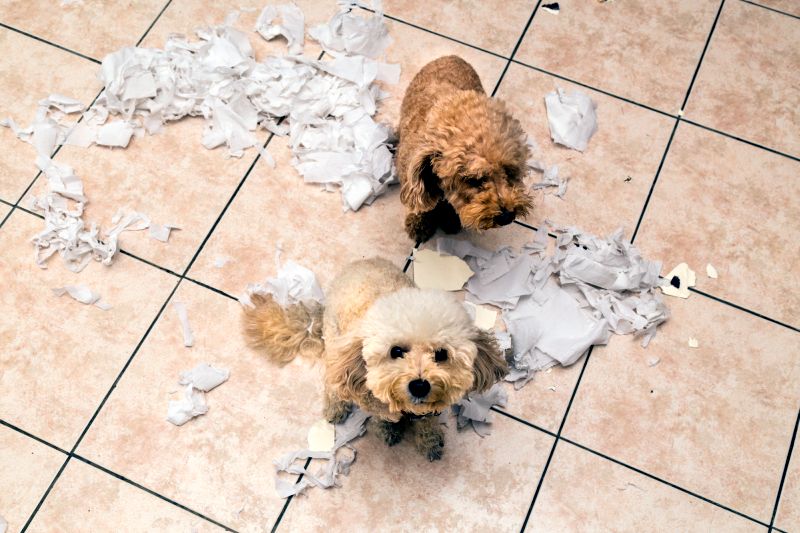
Your pet may, for example, “redecorate” your home by nomming all your stuff, scratch and dig at your floors, or — in particularly troubling cases — even engage in self-harm by biting or chewing on himself. These types of things can cost you money and (more importantly) put your pooch in harm’s way.
But if you provide some extra stimulation and enrich your dog’s life, you’ll often find these problematic behaviors decline significantly.
They may not disappear entirely, but they’ll often ratchet down the problems enough that you can reach a satisfactory stasis by incorporating some traditional training and management strategies.
And there’s one other fantastic thing about providing your four-footer with some enrichment opportunities: Many of them will give you another way to bond with your pup.
Sure, some forms of enrichment — like, say, chewing on a toy — are solo activities that your dog can enjoy alone. But others, like exploring the woods on a long leash or cruising the beach for cute collies, are things you can do together.
What Are Some Basic Examples of Canine Enrichment?
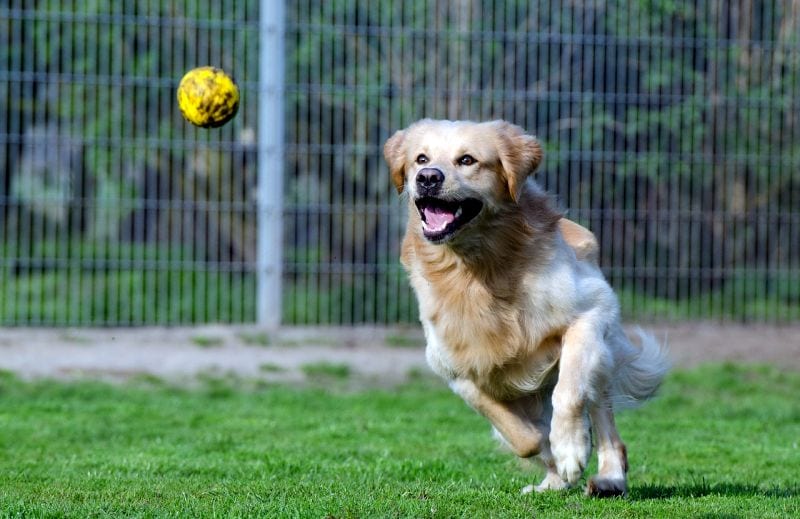
One of the coolest things about providing your dog with enrichment opportunities is the freedom to be creative! The possibilities are endless, and — as long as you stick to things that are safe — there’s nothing wrong with trying out a bunch of different things.
Your doggo will undoubtedly like some more than others, but that’s OK! In fact, it’s part of the fun.
Some basic examples of canine enrichment activities include:
- Playing
- Chasing
- Fetching
- Digging
- Scavenging
- Sniffing
- Shredding and ripping
- Chewing
- Licking
- Solving puzzles
These types of activities and behaviors are satisfying for dogs because they are natural behaviors for the species. In fact, engaging in these behaviors regularly is not only normal, but essential to our dogs’ physical and emotional wellbeing.
But while it’s important to understand the basic types of enrichment described above, you’ll need to go a little further to come up with really fun things that’ll crank up your canine’s cranium.
It’s up to us two-footers to brainstorm activities that will enrich our dogs’ environments and increase their mental stimulation levels.
And we’ll try to help you do exactly that below.
Specific Canine Enrichment Opportunities
When trying to ideate specific types of enrichment opportunities, it often helps to think about potential activities by breaking them down into several different categories.
Typically, the best way to do so is by grouping them based on your dog’s senses and natural instincts. And that’s what we’ve done below.
While it’s often most helpful to think enrichment opportunities in this type of organizational framework, that doesn’t mean you can’t combine them for extra four-footed fun!
In fact, mixing up the activities from different categories (or even better, combining them where possible) will keep your doggo engaged and excited for next time.
1. Oral Enrichment: Mouth-Pleasing Fun for Four-Footers
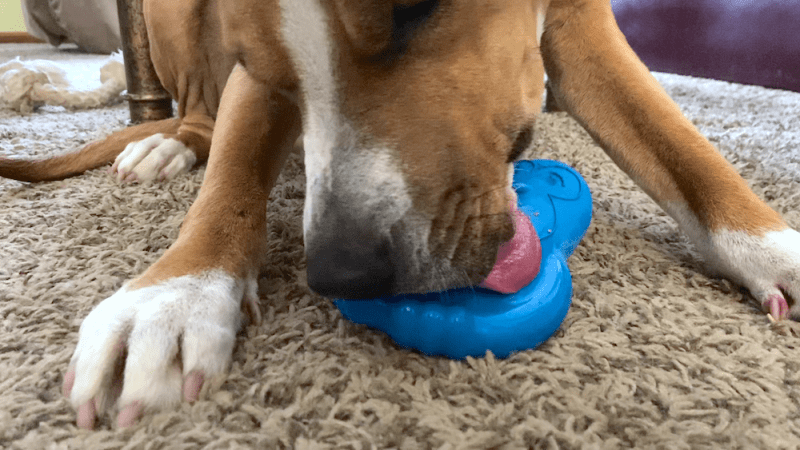
Oral enrichment opportunities satisfy your dog’s instinctual urges involving his mouth. These instincts often get your pooch in trouble during puppyhood, so it’s important to find the right tasks to satisfy them before he eyes your shoes.
Oral enrichment activities address and satisfy the following urges:
- Chewing: Chewing is a natural, relaxing behavior for dogs. Instead of attempting to prevent it, redirect your four-footer and let him chew on things that are safe. Some of the most popular dog-friendly chews include bully sticks, cow ears, and chew toys like Kongs. Allowing your dog to chew on appropriate items can reduce stress and encourage calm in your pooch since it’s a self-soothing activity.
- Shredding: Left-over from your pup’s wolf ancestors, shredding is a behavior that mimics the way canines feed on prey in the wild. To satisfy this urge safely, offer him items like toilet paper rolls or cardboard boxes to destroy (just be sure to monitor him to prevent accidents). Some edible chews may also work well in this respect.
- Licking: Licking is a foraging behavior as well as a way to collect information about objects, and it is also a holdover from your dog’s wild ancestors. You can satisfy your dog’s instinct to lick things by giving him a Kong stuffed with peanut butter or a LickiMat slathered with some kind of tasty goo.
- Bitework: Some breeds are known as “catch dogs,” meaning that they were bred to “catch” prey when hunting. This natural desire to bite and hold things can be harnessed safely with certain toys, such as spring poles or tug toys.
- Dissection: While shredding refers to how a dog may rip apart pieces of a toy, dissection refers specifically to the way in which a dog will gleefully remove his favorite toy’s innards, one fluffy clump at a time, with disturbing precision and focus.
For many owners, dissection can be the most disturbing oral enrichment activity to observe in our beloved buddies.
We may reel in horror at our pet’s all-consuming commitment to eviscerate Mr. Piggy, but this activity actually mimics a part of a dog’s predatory sequence.
A predatory sequence entails the process of activities a dog follows when consuming prey, and it goes as follows:
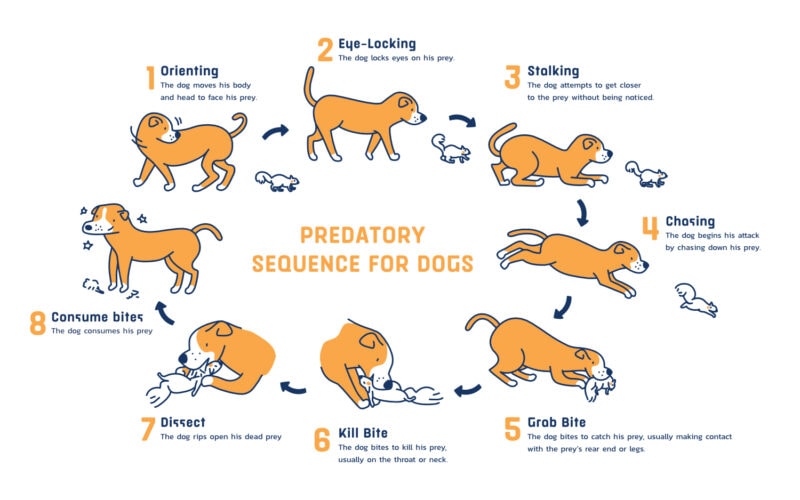
Even though it may horrify us, dissection is a natural part of your dog’s predatory sequence and, just like sniffing and shredding, it’s healthy for them to engage in this behavior.
Some owners may be concerned that allowing their dog to practice chewing, tearing, shredding, and dissecting behavior may encourage him to take part in destroying pillows and cushions.
Fear not!
Giving your dog appropriate outlets to rehearse these kinds of behaviors is healthy and may actually reduce their interest in attacking your cushioning.
You can also try to satisfy your dog’s need for oral stimulation via things like DIY dog chews and homemade howlin’ good ice cream. You can put all manner of wet and gooey goodies on a Lickimat and freeze it for a long-lasting lick session, as demonstrated in our video below:
2. Physical Enrichment: Dogs Like to Move-It-Move-It
Like us, our dogs need to move and groove daily to get their hearts pumping. Physical movement and exercise are not only beneficial to your pooch’s waistline but they’re also needed to burn off excess energy in youth and maintain mobility as he ages.
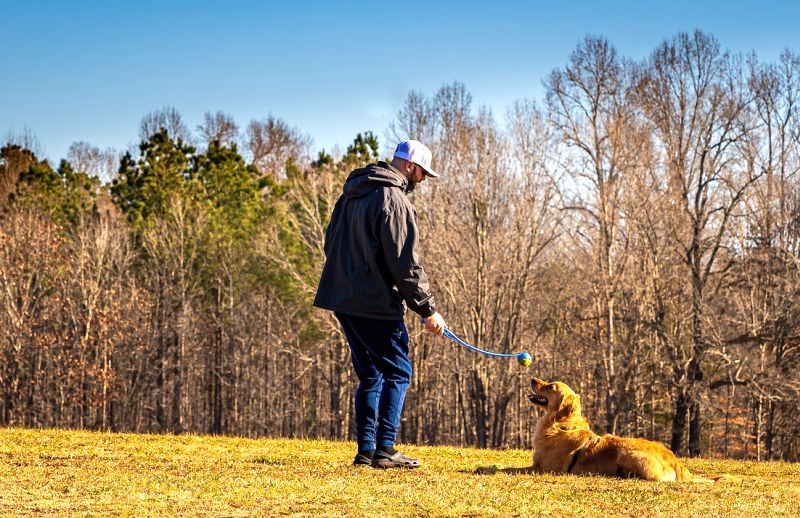
Some of the best forms of physical enrichment include:
- Fetch: Most dogs have an innate need to please and retrieve — things that a round of fetch addresses with ease. In fact, if your dog’s breed includes the word “retriever,” you owe it to him to play fetch! It’s part of what he was born to do. Whether you use a ball, dog-friendly stick, frisbee, or any other fetch toy, your dog will have a blast.
- Walks and jogs: From leisurely walks around the block to early morning jogs, there are many ways to up your canine’s cardio game. You can spice up your pup’s daily strolls with fun dog walking games, too. Just be sure to do so safely, meaning you’ll want to keep your pupper leashed and make sure you’re both visible to drivers.
- Hiking: Escaping the suburbs for a hike satisfies physical, mental, and sniffing needs as your dog investigates a new environment with you. You’ll want to keep him leashed to stay safe, but consider using a long-line to give him a bit more freedom to explore. Also, make sure you give him plenty of time to investigate intriguing odors, paw at the ground a bit, and generally check out the great outdoors — don’t treat your hike like a race.
- Canine sports: Sports like agility, treibball, flyball, and dock jumping channel your dog’s mental and physical energy into a positive outlet. But aside from that, they’re just a blast for your four-footer! Even better, many dog sports, like canicross or bikejoring, allow you to get in on the fun, too! There are a huge number of potential new hobbies for you and your dog to explore – be sure to check out out full list of dog sports and games to learn more!
- Swimming: Some breeds can’t get enough of the water, while others, like basenjis and brachycephalic (short-faced) dogs, may be less than pleased with the wet stuff. But for those who like it, swimming provides low-impact exercise that is fun and exhausting (in a good way). Swimming can be particularly beneficial for older dogs and those limited by mobility issues. Just be sure to monitor all dogs around water, regardless of their swimming abilities.
- Digging: Burrowing and digging behaviors are prevalent in many breeds, particularly dachshunds and terriers who were bred as ratters and earth-explorers. So, while you probably don’t want Fido to dig up your flower bed, you should try to devise ways for your pooch to dig in a constructive (or at least, not destructive) manner. A homemade sandbox in the backyard is an easy solution, which is heaven for digging doggos.
- Chasing: Many dogs, especially speedy sighthounds, have a strong urge to chase, so you’ll want to let them scratch this itch regularly. Sports like lure coursing are a great way to do so, but flirt poles are also great for letting your canine chase things. And don’t hesitate to let your pup chase squirrels around the backyard (unless he’s so skilled that he may actually catch one — you don’t want your dog actually capturing the cute little rodents) or just enjoy a game of backyard tag with your pupper.
With physical enrichment, keep your dog’s condition, energy level, and general health in mind when selecting activities to pick the best fit for him.
Young puppies and older dogs shouldn’t jog, for instance, and a working malinois may not be satisfied with a leisurely walk. Always offer fresh water and never engage in strenuous activities in hot conditions.
3. Mental Enrichment: Brain-Teasers for Your Fury Friend
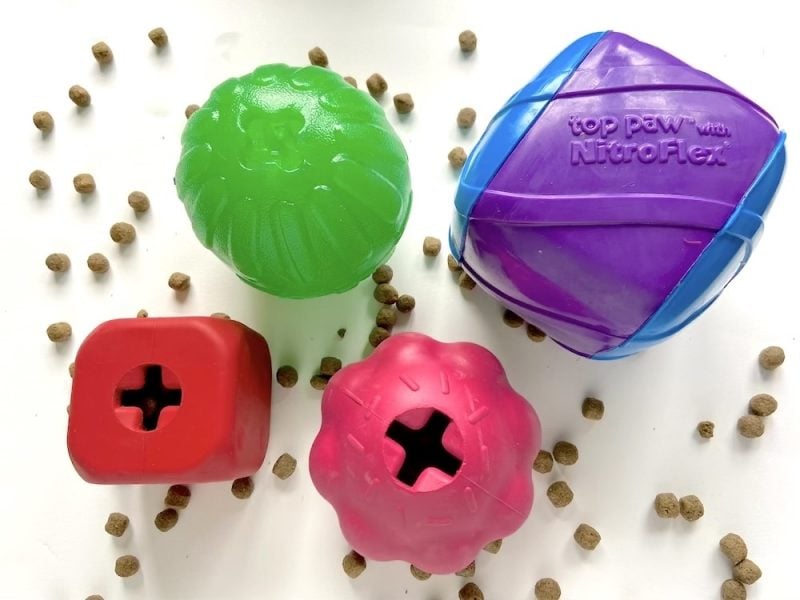
There’s another doggo organ that needs attention: the one between his ears!
Mental stimulation keeps your pooch’s brain buzzing and engaged — a must from puppyhood to his senior days. In fact, one could argue that mental stimulation is the most important kind of stimulation to provide your pooch.
Doing so will not only keep your pet happier, but it will also help reduce the number of problem behaviors your pooch exhibits that are due to boredom or frustration.
Fortunately, there are a ton of ways to keep your canine’s cranium crankin’ along at full speed. Best of all, you will likely find some of these fun too! Some fun ways to meet your dog’s mental needs are:
- Training: Many dogs love to learn (as well as show off their skills for their human). So, teach your dog something new or sharpen his current skill set by having a training session. You can practice tried-and-true methods or try something new, like introducing a clicker. Just be sure to keep things 100% positive — aversive training methods are not only a drag for you both, they don’t work as well as force-free and positive reinforcement-based training methods. They’ll also damage the bond and trust between you and your pet.
- Skill-based games: Games are an incredibly effective method of enriching your canine’s life. And, as a bonus, they’re often fun ways for you to keep your pet active and engaged too. So, spice up your training sessions or backyard playtime with fun brain-teasing training games, like hide-and-seek and “find it.”
- Puzzle toys: Puzzle toys are a fantastic way to enrich your dog’s life when you’re busy doing other things. Most of these brain-bulking gadgets encourage your dog to find a tasty treat using his noggin. For example, some require him to flip over hidden doors to obtain a treat or finagle a hunk of cheese out of a Kong.
- Interactive toys: These gizmos are a lot like puzzle toys (some may even consider them different versions of the same thing), but interactive dog toys do more than just sit around — they actually, you know, do stuff. A few examples include dog-activated ball launchers and hide-and-go-seek stuffies. But no matter which one you choose, these items will keep your doggo engaged far more than the average tennis ball will.
Some of these activities may need your guidance at first (and occasionally, dogs seem completely uninterested in them), but most pooches will eventually get the hang of them and become pupper pros in no time.
As always, monitor your fur kiddo when toys — particularly toys with potential choking hazards — are involved.
4. Exploration: Dogs Love Discovering New Things
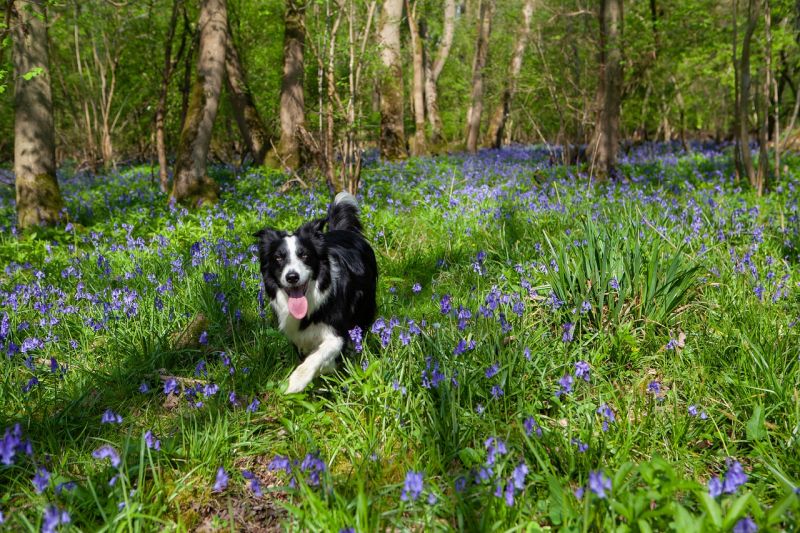
Dogs are naturally curious creatures, who love adventure. And once again, this tendency can be traced to their wild-living ancestors.
In fact, many wild animals routinely travel long distances to satisfy their needs as part of daily life. But domestic dogs don’t need to walk 15 miles to track down a deer; instead, they are usually restricted to the house and yard, which is precisely why they love walks and car trips so much.
Taking your dog-and-owner show outside provides invaluable mental stimulation, and there are tons of ways to do so.
To satisfy your woof’s wanderlust, try the following:
- Visit new places: Explore a new park. Walk down a new street during your daily walk. Pop into a dog-friendly store. Let your four-footer pick your walk’s destination for the day. Just about any new (and dog-safe) environment is fair game for exploring. But whichever you choose, make sure to keep it positive and encourage your dog to sniff around.
- Try new things: Even if you’re visiting a familiar place or you can’t leave the backyard, you can explore familiar surroundings in a new way with your pup. Have him weave between barriers, go down a slide (carefully, and only if he seems to be game), or walk on a new terrain, like sand. While these activities may seem small, they offer new experiences and stimulation, which is the entire name of the canine-enrichment game.
- Take a dog-friendly vacation: We could all use some time away — including our pooches. Rather than kenneling your dog for a vacation, look into dog-friendly hotels or rentals. For bonus points, try to pick an area that offers the opportunity for your dog to do something he loves. For example, if Spot loves to swim, consider visiting the beach.
Whichever activity you choose, maintain your pooch’s safety by keeping him leashed in unsecured areas, make sure he always has plenty of fresh water to drink, and keep a canine first-aid kit close by to tend to boo-boos. If your pup’s a senior or lacking in stamina, consider a dog stroller, with these wheeled wonders letting your dog enjoy a day out without getting too overworked.
5. Olfactory Activities: Nosing Around for Special Scents
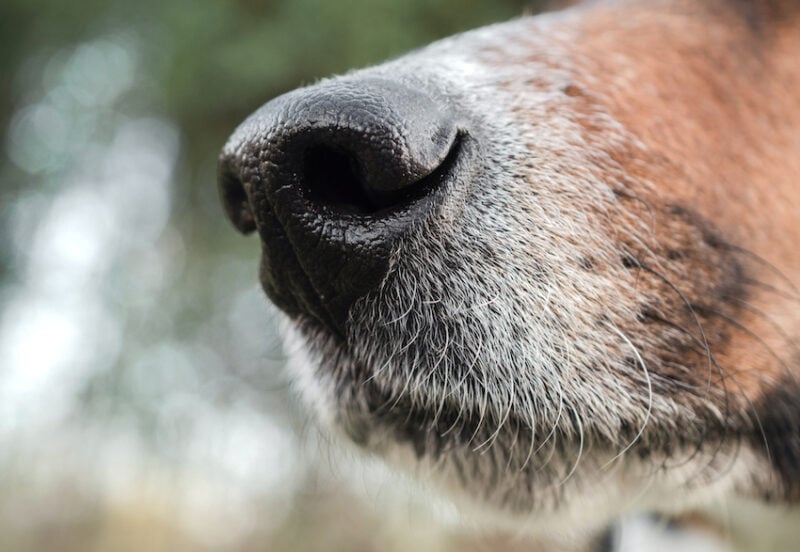
A dog’s sense of smell is far more powerful than ours, and putting that sniffer to use is one of the best ways he learns about his environment. In fact, many experts believe that dogs rely more on their sense of smell than their eyesight to learn about the world around them.
Denying him from nosing around takes the fun out of other activities, like walks, as he’s missing one key aspect of the experience.
So, don’t downplay your dog’s desire to stop and smell his “pee-mail,” that half-eaten sammich on the ground, and the occasional animal carcass.
(What? We didn’t say you have to smell them.)
To work out your dog’s schnoz, try out these fun activities:
- Decompression walks: Also known as snifarri walks, these strolls can be off-leash in a safe area or on a long leash. During them, you’ll simply allow your dog to explore with his nose, sniffing around as he pleases, rather than going on a defined, down-to-business walk like you normally do.
- Snuffle mats: Mimicking natural foraging behavior, snuffle mats feature long fabric tendrils that resemble brush or grass. To use them, you’ll hide treats amongst the fabric strips and let Fido find them. Be sure to start by “hiding” the treats in the surface layers of the mat; as your dog’s skills improve, start burying the treats deeper and deeper in the strands.
- Treat dispensing balls: Packed with hidden goodies, these toys require your dog to paw, push, lick, and chomp to retrieve the treats inside. First, your dog must sniff them out, of course, and smelling a treat he can’t reach will keep him engaged in scooting the toy around. Just note that some dogs are better at solving these toys with others. Fortunately, many of the best models have variable difficulty levels to suit dogs of different skill levels.
- Tracking: Popular among hounds, this sport can include tracking everything from people to animals using scent. It’s also a great way to build your bond, as you function as a team in the field. Just be sure to keep safety in mind; either play these games in an enclosed area or do so with the help of a long lead.
- Nosework games: Nosework games combine your dog’s natural desire to use his nose with the fun of games, making them win-win scenarios. And there are so many options available that the sky’s the limit with sniffing games. You can hide a tasty chew in your dog’s toy bin in a game of “find it,” or you could play “pick a hand,” where you hide a tasty training treat in one of your hands and have your pooch sniff it out.
Don’t be afraid to get creative with nosework games, either! From hiding treats in a gift your dog can open by shredding to checking out a new dog park, there are many ways to combine your dog’s need to sniff with other aspects of canine enrichment.
6. Social Enrichment: Playing with the Pack
One of the most important yet sadly overlooked areas of a dog’s life is social enrichment. What this entails varies by dog, as not every pooch is keen on having canine friends, but every dog needs time with his humans.
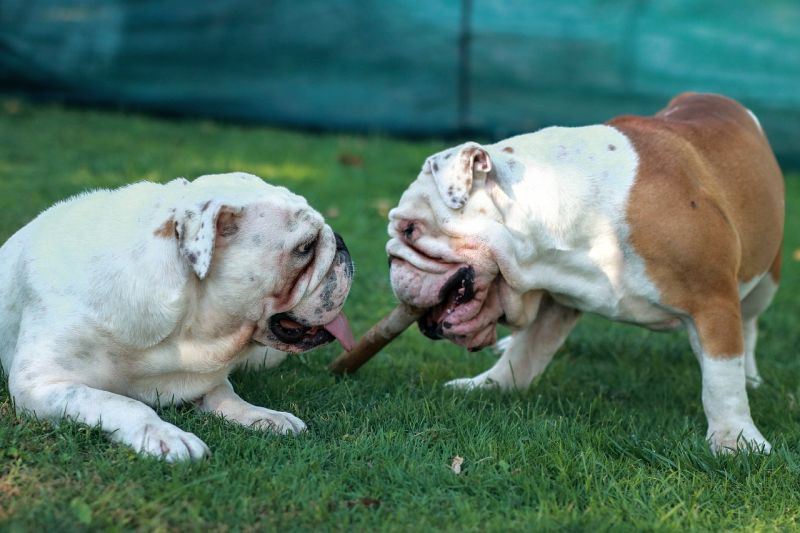
For a four-legged social butterfly, you can fulfill his social needs with:
- Dog park visits: These fenced-in facilities provide a place for pooches to meet other fur friends and play. Some include agility equipment or man-made obstacles for climbing and exploring. But whichever one you choose, be sure to keep safety in mind, brush up on your dog park etiquette, and monitor your pooch closely for signs of canine-on-canine conflict.
- Doggie daycare: Like the child variety, doggie daycares consist of a pup playgroup in a facility with caretakers monitoring the (adorable) commotion. Pack play allows your dog to mix and mingle with a group of canines in a more controlled setting than a dog park, and the fact that dog-care professionals are monitoring the mutts means that you can do other things while your pupper is having fun. Just make sure to choose an established doggie daycare that hires dog-savvy staff who can keep your pup safe while he plays with his peers.
- Managed play groups: If any friends or neighbors have a dog-friendly doggo, you may want to consider arranging puppy playdates. Some dogs get overwhelmed by dog parks and daycare and others may need a fur friend that matches their energy, making this an ideal option as a dog park alternative.
- Group walks: Some dog walkers offer a group walk service, in which multiple dogs are walked at once. More sociable or pack-happy breeds like beagles often enjoy this activity, but even more stereotypically aloof and independent breeds like chows may enjoy these outings too. As always, you’ll just have to determine whether your specific dog will enjoy the activity or not — you know your dog best.
- Parallel walks: For pups just meeting a new friend or who are more dog-selective, you can implement these socially distanced walks. Keeping a comfortable space between dogs (such as across the road), you walk in parallel fashion with another owner. This — when executed carefully — is also a great way to introduce dogs to each other, as the parallel pattern helps them automatically feel like members of the same pack, trying to achieve the same goals.
Just understand that your dog (and those who don’t like other canine friends) also needs one-on-one time with his favorite person: you.
Some of the best one-on-one activities with your pooch are:
- Tug: We don’t know where this preposterous notion originated, but no — playing tug with your dog won’t cause aggression. In fact, rounds of tug teach your dog valuable skills such as “Drop it.” Just remember to use proper toys, however, and never play too rough with your dog to avoid causing tooth injury. Always make sure he’s got a good grip before tugging, and never jerk the toy suddenly during play.
- Flirt pole: These irresistible toys give your dog a target to chase: a small, usually furry, toy at the end of a rope, which mimics prey. You hold a pole on the other end of the rope that you control, shimmying, zipping, and shaking it to your heart’s content, keeping your dog engaged.
- Walks: Walks are obviously necessary, but they are also the perfect opportunity for nurturing your relationship with your dog. You can practice many skills during walks too, like heel, wait, and sit, or play walking games like urban agility.
- Training: There are few activities that sync you and your dog more than training sessions. So, take 15 or 20 minutes to teach your dog some new skills or to practice the ones he’s already mastered. Also, be sure to work on a variety of skills, including imperative ones, such as your dog’s recall command and hand targeting, as well as just-for-fun stuff, like teaching your pet to say “I love you.”
Signs Your Dog Is Lacking Enrichment: Symptoms of a Bored Pupper

Despite our best attempts to the contrary, sometimes our dogs need more stimulation than we’re giving.
We’re not judging — just pointing out the facts of the matter. We get busy and distracted too! Maybe you’re unconsciously shortening or skipping walks because of #life or the weather has affected your regular adventures together.
No matter the case, be sure to watch out for these signs that your pooch may need more canine enrichment:
- Restlessness or pacing
- Destructive behaviors (chewing, scratching, garden digging)
- Nuisance barking
- Depression
- Agitation
- Trash raiding
Luckily, with some minor tweaks to your routine, you and your dog will be back on the right track and happier together.
Enrichment Is Important for All Animals!
Still not sold on the importance of providing enrichment opportunities for your pet?
Consider the fact that modern zoo keepers have found that enrichment opportunities are critical for the well-being of most of the animals they care for.
And this doesn’t only include primates, dolphins, canines, and other super-smart critters — they even provide enrichment opportunities (often by incorporating complex habitat elements) for invertebrates, reptiles, fish, and other less-than-brilliant creatures.
As it turns out, dog owners can employ a lot of these same concepts, so be sure to watch the video above to spark some ideas!
For example, zoo keepers may hide delicious treats throughout their animals’ enclosures, provide interesting and novel items for exploration and play, or even take the animals on “walkabouts” to enjoy mixed-species encounters.
***
What canine enrichment activities do you do with your pooches? Any we discussed? Any others? Let us know in the comments!
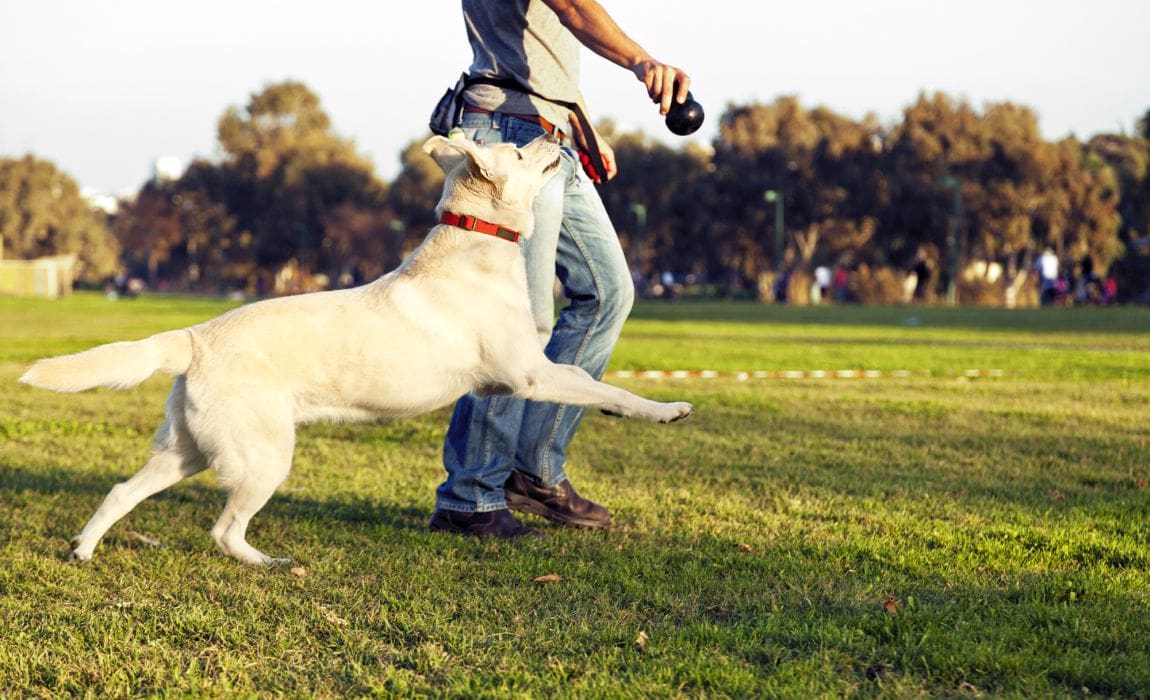




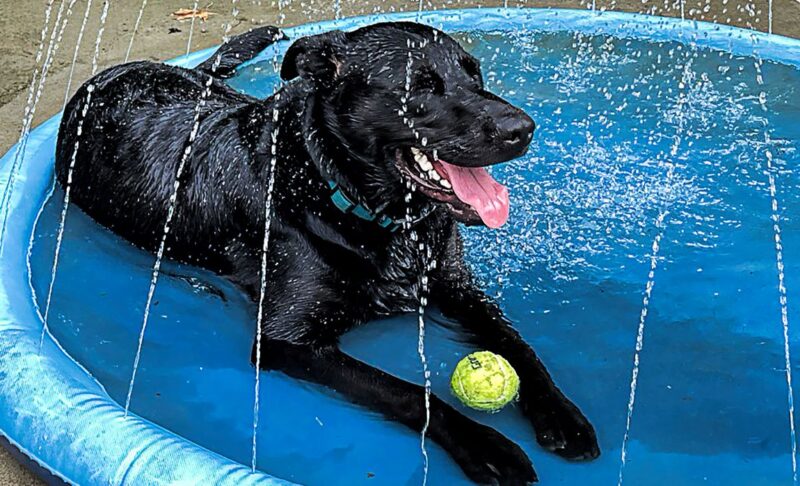
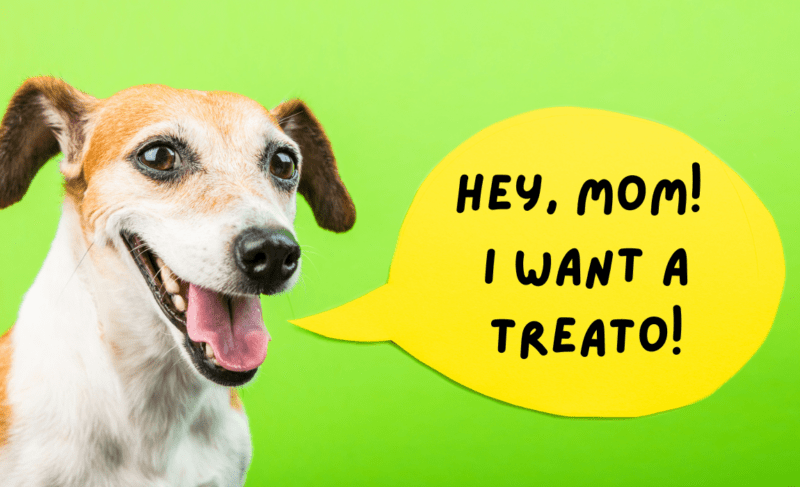
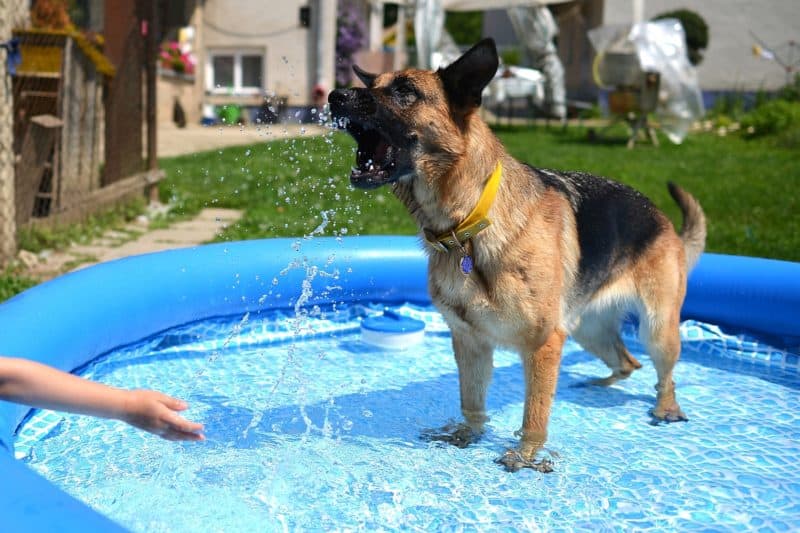
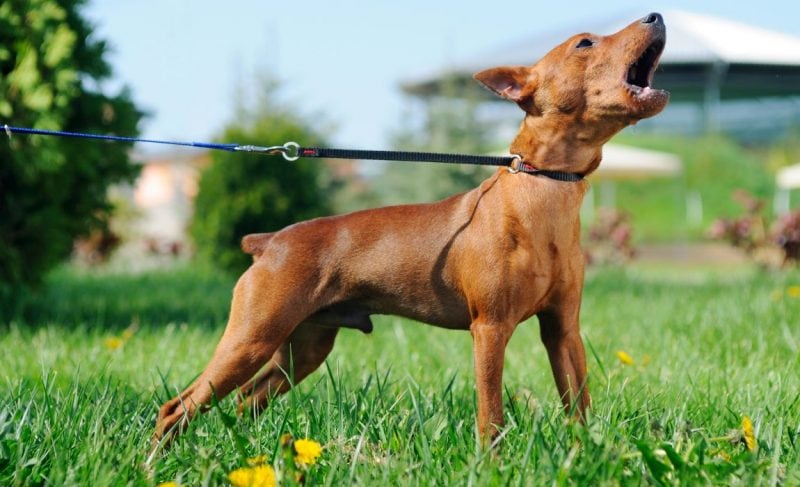

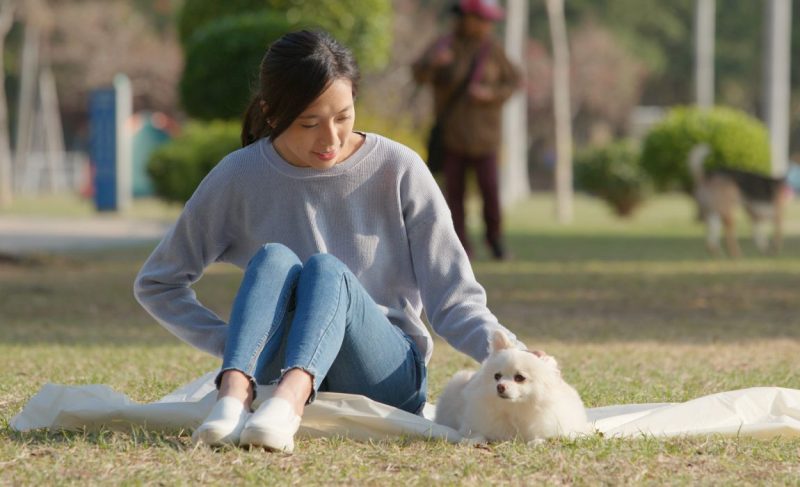
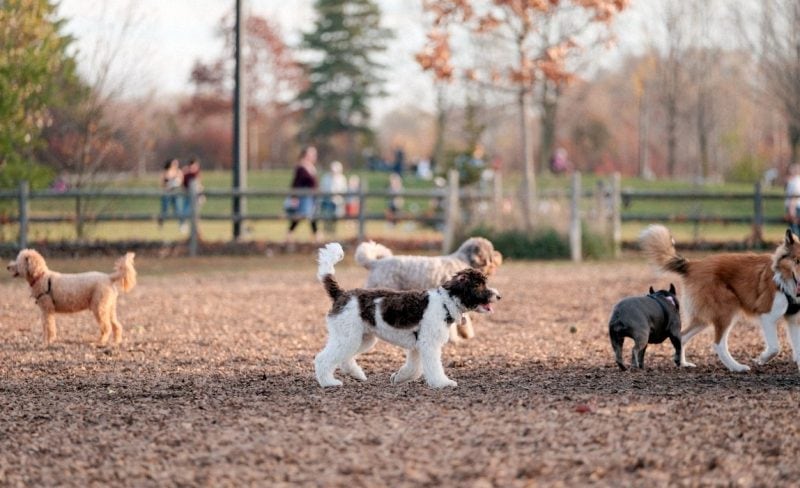

Leave a Comment